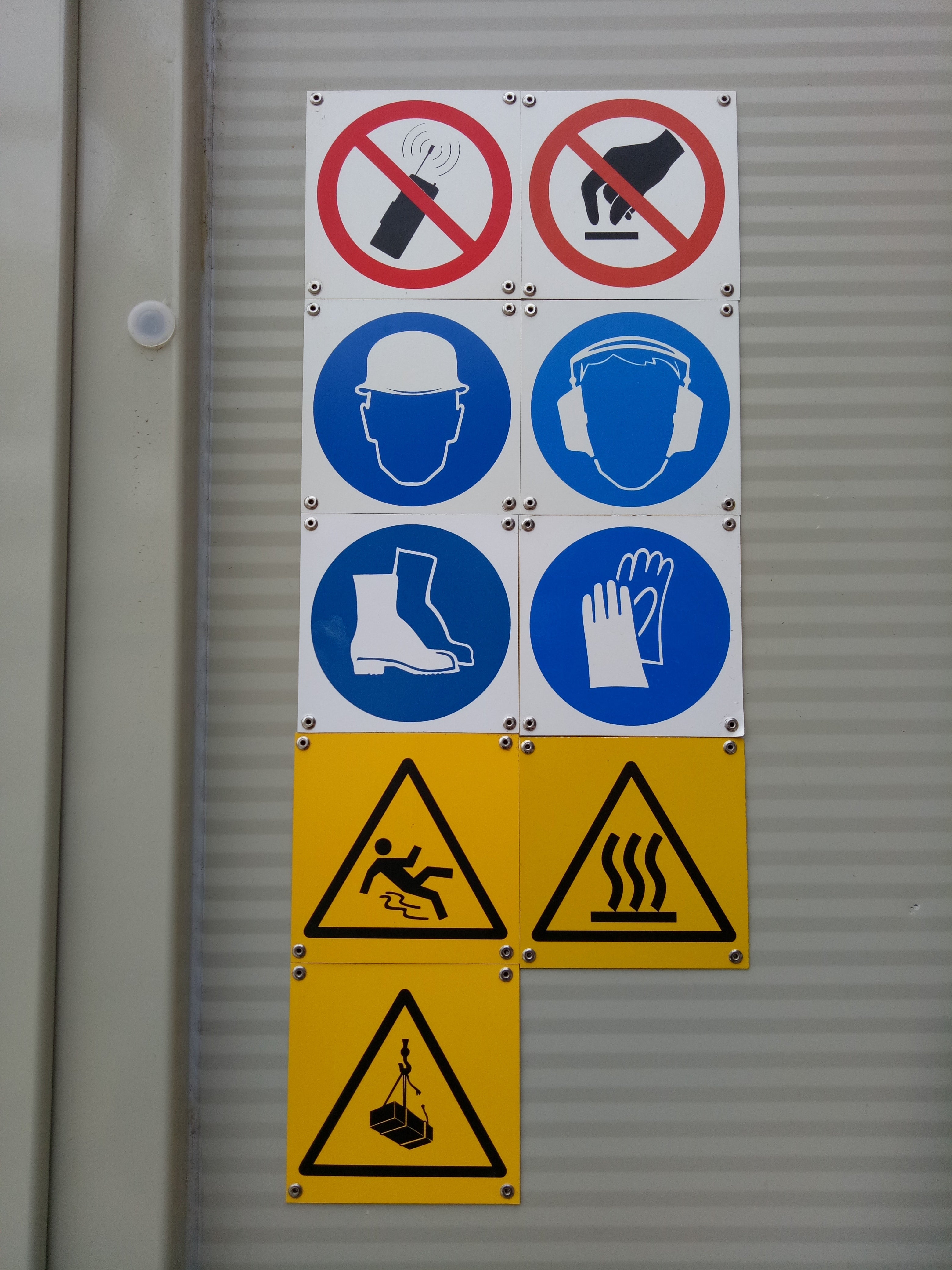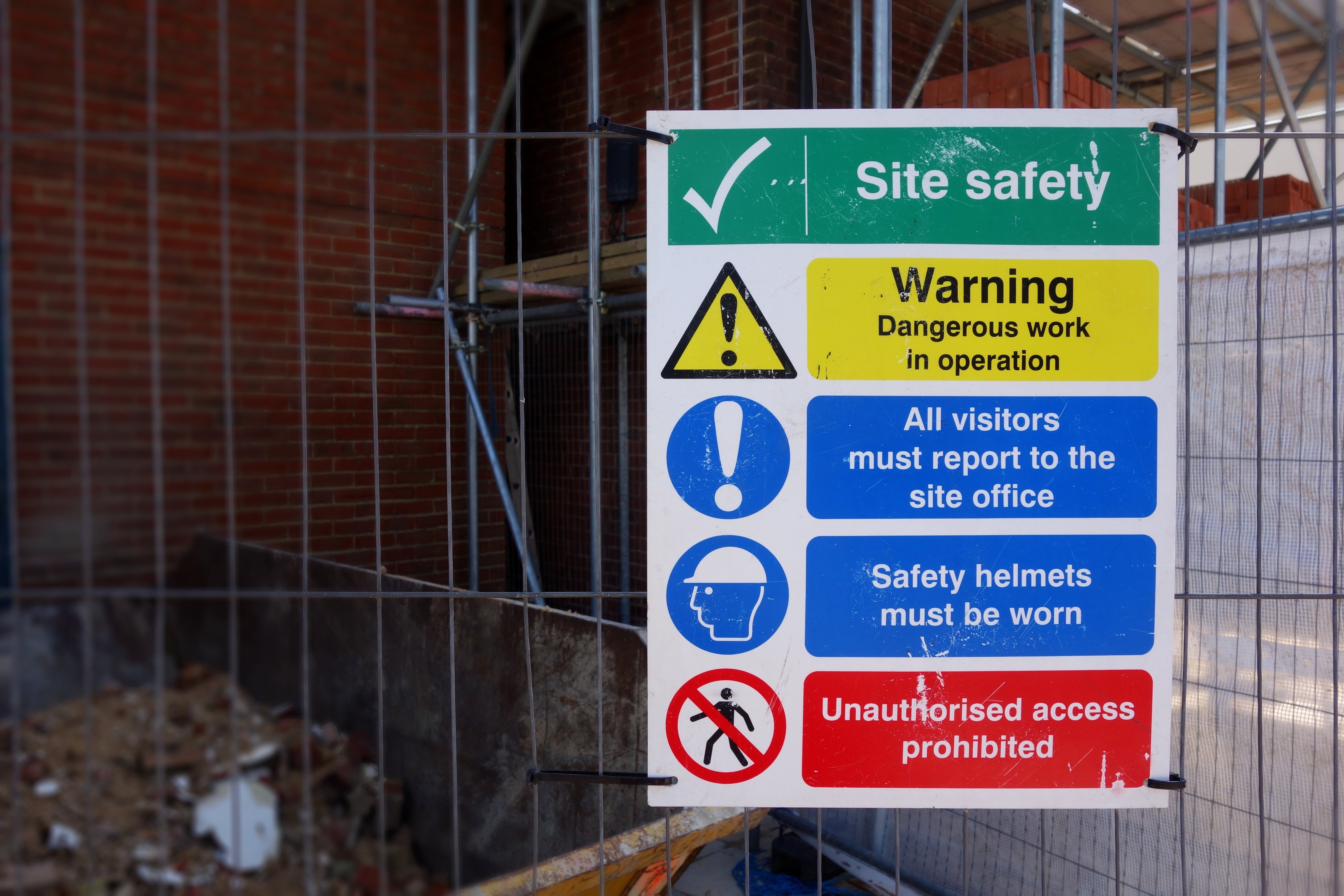Safety signs are an essential part of maintaining safety in workplaces, public areas, and construction sites. They provide crucial information, prevent accidents, and ensure that everyone is aware of potential hazards. In this post, we’ll cover the five most common safety signs, what they mean, and where you’re likely to encounter them.
1. Prohibition Signs
Appearance: Red circle with a diagonal line across a black symbol on a white background.
Meaning: Prohibition signs indicate actions or behaviours that are not allowed.
Examples:
-
No Smoking: Found in offices, hospitals, and other non-smoking areas.
-
No Entry: Seen on restricted access doors or hazardous areas.

Why They’re Important: These signs reduce the risk of dangerous behaviours that could lead to accidents or harm.
2. Warning Signs
Appearance: Yellow triangle with a black border and black symbol.
Meaning: Warning signs alert you to potential hazards or dangers in an area.
Examples:
-
Danger: High Voltage: Found near electrical equipment or substations.
-
Slippery When Wet: Common in areas prone to spills or wet floors.

Why They’re Important: They give people a chance to avoid harm by being cautious in dangerous areas.
3. Mandatory Signs
Appearance: Blue circle with a white symbol.
Meaning: These signs specify actions that must be taken to ensure safety.
Examples:
-
Wear Protective Eyewear: Found in workshops or areas with flying debris.
-
Hard Hats Must Be Worn: Common on construction sites.

Why They’re Important: They help enforce safety protocols and minimise risk.
4. Emergency Information Signs
Appearance: Green rectangle with a white symbol or text.
Meaning: Emergency signs provide guidance in case of an emergency.
Examples:
-
First Aid: Indicates the location of first aid kits or stations.
-
Emergency Exit: Found in all public buildings to show evacuation routes.

Why They’re Important: These signs ensure that people can act quickly and safely during emergencies.
5. Fire Safety Signs
Appearance: Red rectangle with a white symbol or text.
Meaning: Fire safety signs provide instructions or identify fire safety equipment.
Examples:
-
Fire Extinguisher: Marks the location of extinguishers.
-
Fire Hose Reel: Indicates where fire hoses are stored.

Why They’re Important: They help people quickly locate fire safety equipment in emergencies, potentially saving lives and property.
Conclusion
Safety signs are vital for preventing accidents and ensuring compliance with workplace health and safety regulations. By understanding the most common types of safety signs and their purposes, you can help create a safer environment for everyone.
Need custom safety signs for your business or project?
Explore our range of high-quality safety signs here.



Share:
How to Choose the Right Safety Sign